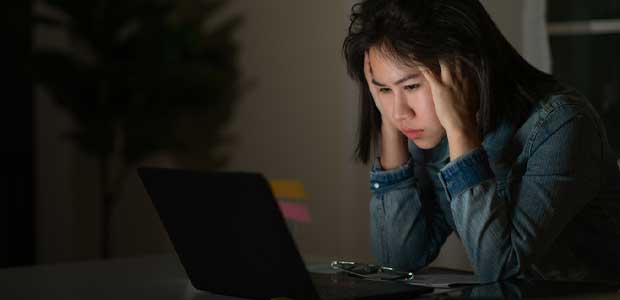
Does Working from Home Affect your Mental Health?
There are both benefits and downsides to working from home.
- By Molly Hopper
- Nov 17, 2022
The coronavirus pandemic changed the way we look at the professional world altogether. While a standard 9-to-5 office routine was never to most people's taste, it had, for the best part of a century, been seen as the “norm” for working life.
But due to the nature of the pandemic, these traditional working landscapes were abandoned in favor of an environment a little closer to home—literally. And whilst we’re now able to reflect on the pandemic years, many people are looking to retain some of the contemporary elements to working life that millions adopted during this time.
With home working seemingly here to stay, it’s important to consider the long-term impacts it could have on our mental health. Though there are many benefits to remote setups, there are also lots of downsides that can ultimately affect our wellbeing outside of our professional lives.
In this post, we’ll look at the pros and cons of working from home, as we explore how working from the comfort of your living room can be both good and bad for your mental health.
Pros
Greater flexibility. Arguably the biggest advantage to working from the comfort of your own home is the flexibility it allows. The freedom to start and end at a time of your choosing makes for greater efficiency and time management, allowing us to strike a better work/life balance.
No commute. Would it shock you to learn that for Londoners, their average commute to work takes as long as 74 minutes? Numbers weren’t much better across the rest of the country, with it taking the average UK commuter just under an hour to get to work. In the age of flexible working, your journey is as hard as rolling out of bed and turning on your laptop. This can also reduce the stress of being sat in traffic, which in turn can help your mental health.
Family time. If you have a young family, employment which allows you to stay at home all day will reduce the risk of missing out on spending quality time together. Many parents also feel guilty when their work takes them away from their family. And while you’ll definitely want to find time for yourself to focus, it’s nice knowing the family is always just a stroll away for a quick chat or a lunch break. Additionally, it can also allow two-parent households to share the load more easily, reducing stress and frustration.
Cons
Living and working space. Finding yourself in the exact same space for the majority of your day can be a little challenging. It makes it a lot harder to switch off your work brain, with the lines between your job and your personal life becoming somewhat blurred. The best way to counter this is by setting up a dedicated area to work from
.Lost social connection. As reported in this remote working guide, 20 percent of employees said loneliness was the worst thing about working from home. Colleagues can sometimes transcend your professional bonds and turn into genuine friendships. While this isn’t impossible to achieve in the digital age, it is a lot harder. After all, you can only bond to a limited extent through a computer screen.
Just as the presence of your friends and family can be a blessing, it can also be a curse. Having people constantly around you who you enjoy being with or talking to means you might struggle to focus and find yourself mentally trying to balance work and home life at the same time. If that’s the case, make sure to have a sensible conversation about it with the adults, and set up rules for kids to give you alone time.
Working from home isn't for everyone, and it’s likely to impact people’s mental health in different ways. But the most important thing is to find an arrangement that works for both you and your employer, to ensure your mental wellbeing doesn’t suffer as a result of your working setup.